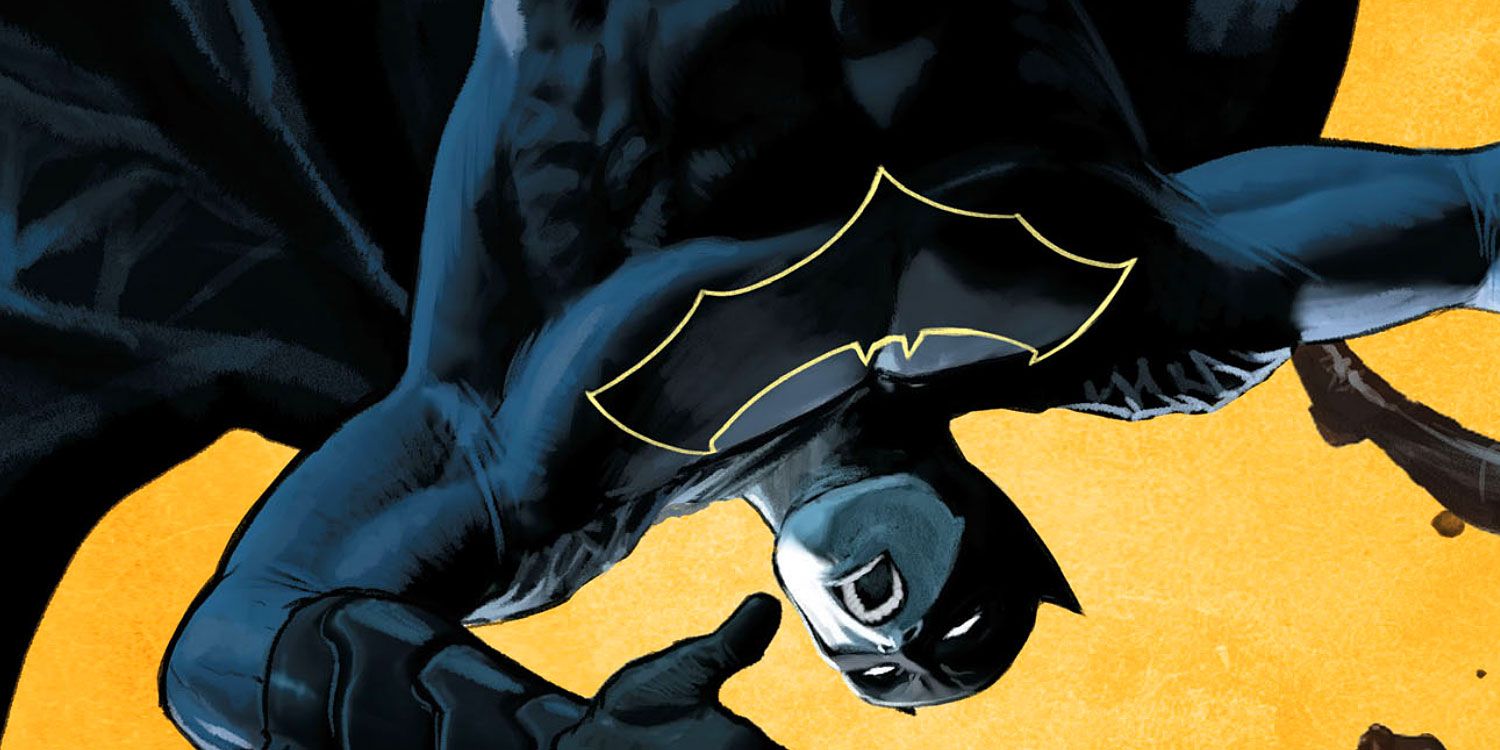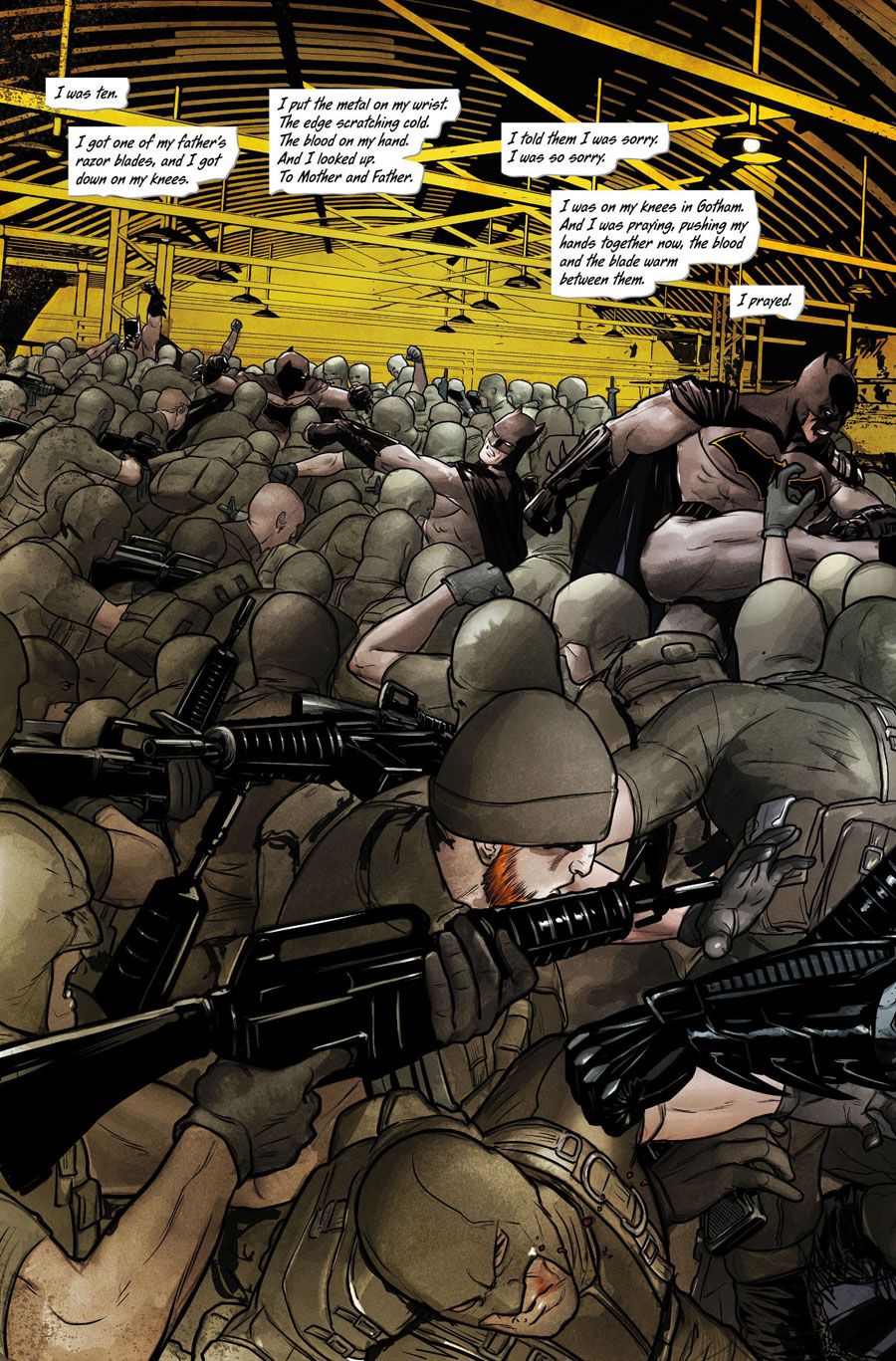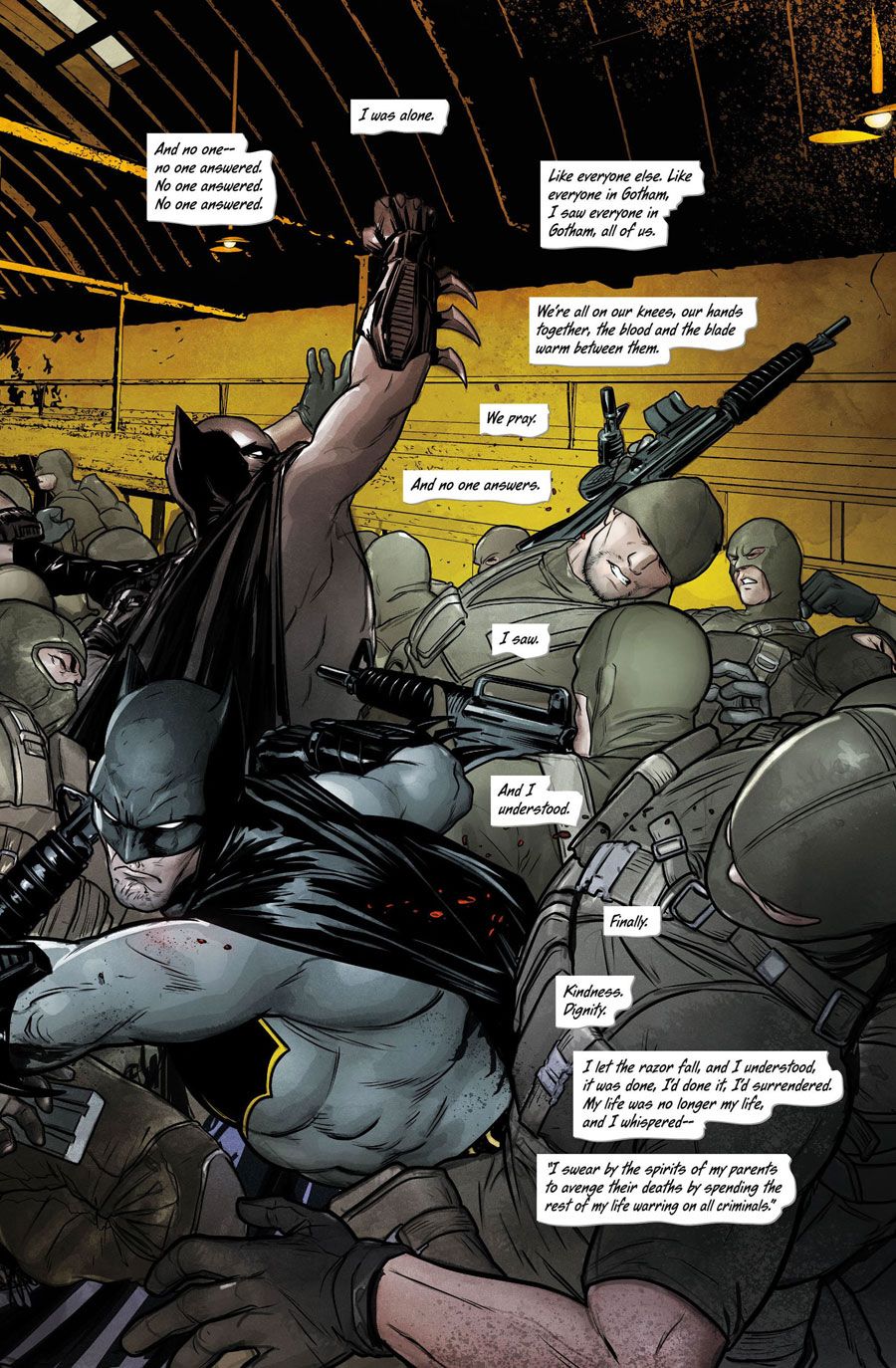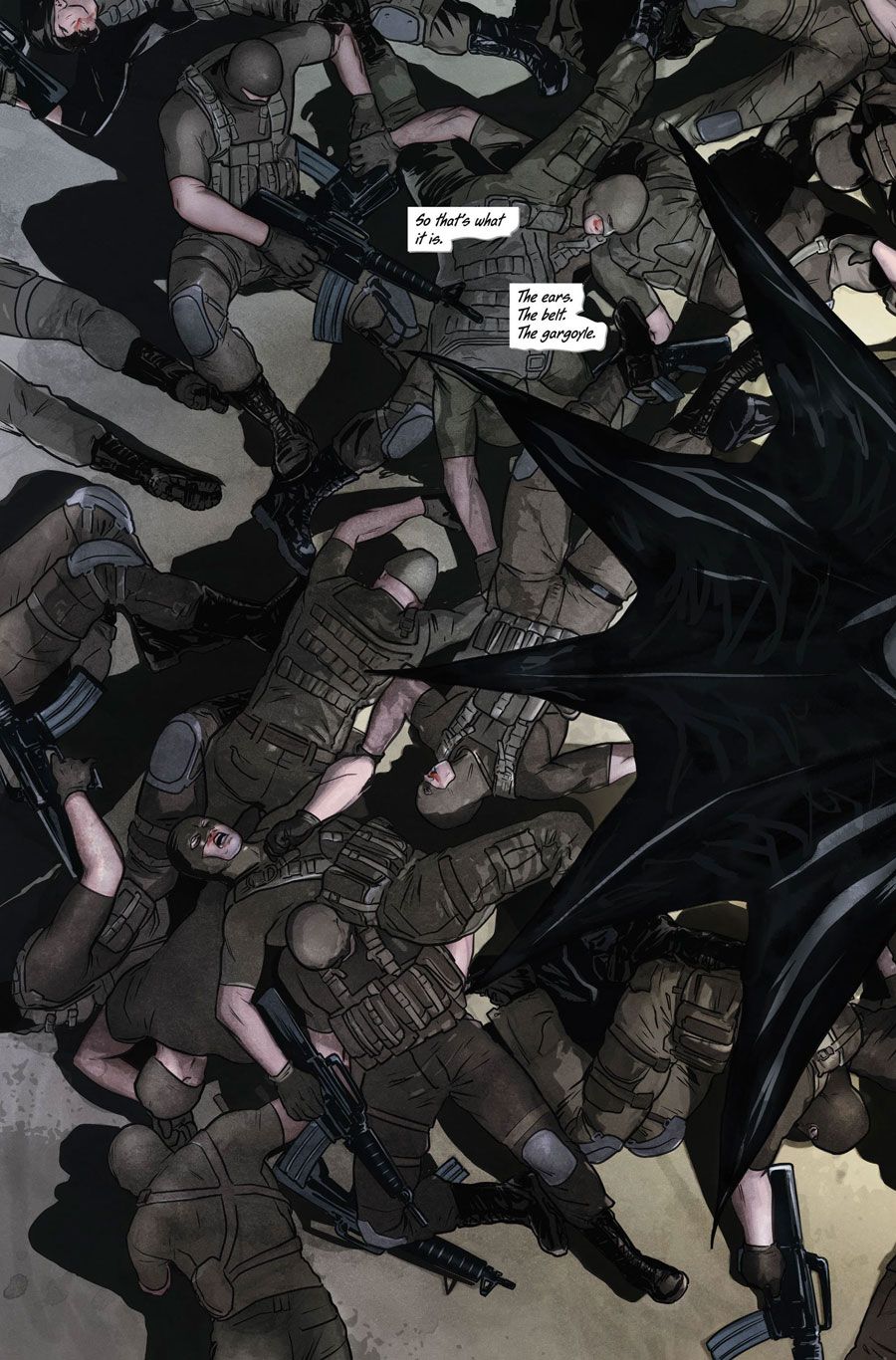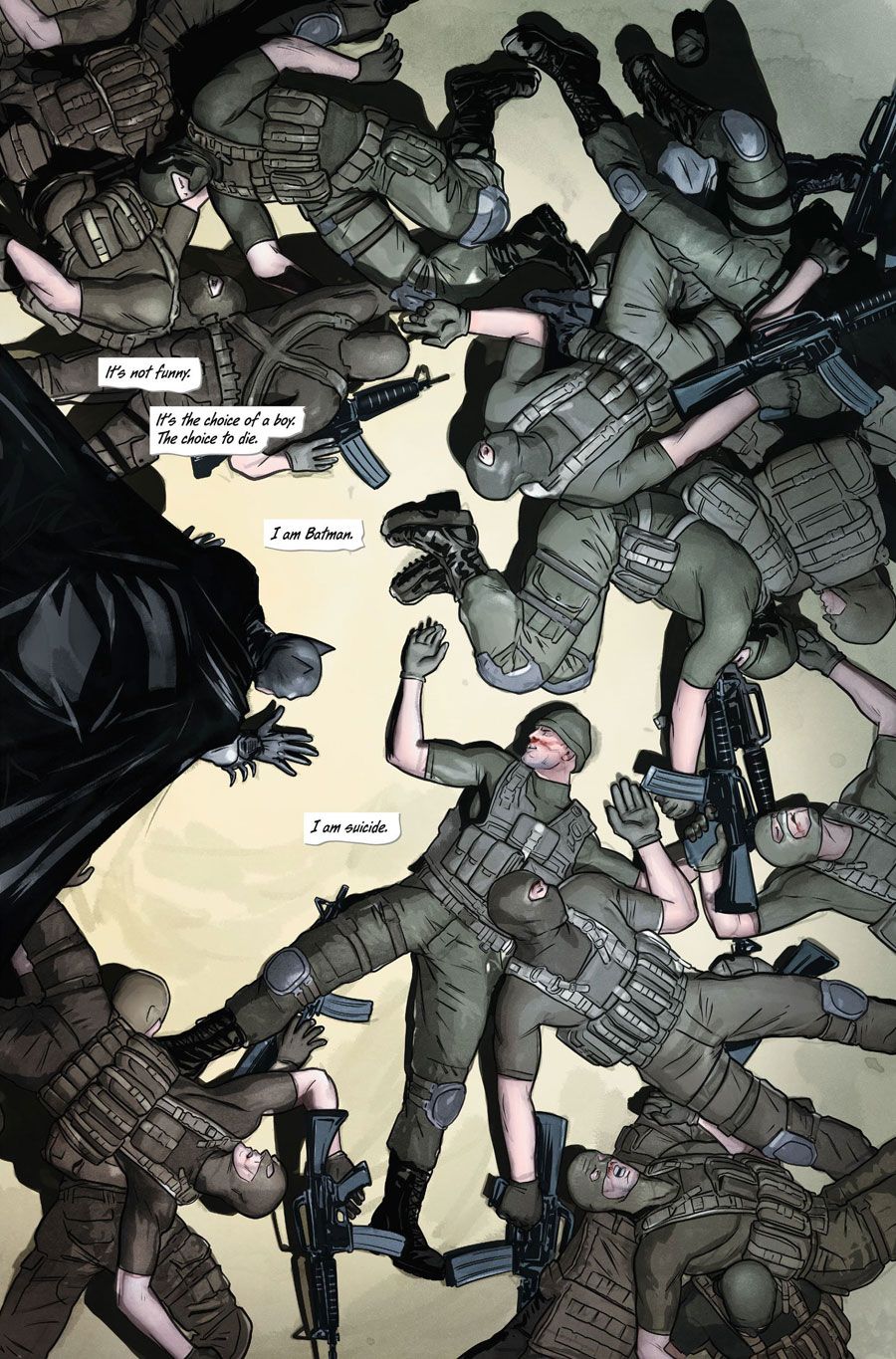SPOILER WARNING: This article contains major spoilers for “Batman” #12, on sale now.
While delivering non-stop action as the co-writer of "Grayson," Tom King has truly made a name for himself in comics sharing more emotional and even more personal stories in titles like "Omega Men," "Vision" and "Sheriff of Babylon."
Since the advent of DC Comics' Rebirth, King has blended his bold and brave storytelling talents brilliantly in "Batman" working with superb artists like David Finch, Riley Rossmo and, currently, Mikel Janin.
RELATED: Tom King Just Changed the Very Foundation of Batman’s Origin Story
In the series' latest arc, "I Am Suicide," which features an epic confrontation with Bane (and a potentially devastating double-cross by Catwoman), King channeled his own painful childhood to add yet another layer of subtext to Batman's origin that makes readers feel even more empathetic towards young Bruce Wayne -- if that's even possible.
CBR connected with King, who spoke candidly about his difficult formative years as a comic book fanboy without a lot of friends. The ex-CIA office-turned-best-selling comic book writer shared incredible revelations about the complex and complicated relationships of The Bat, The Cat and Bane and how they relate to Psycho Pirate, Gotham Girl, Tim Drake and quite possibly -- and most explosively -- the Watchmen.
CBR: A new government study shows that suicides rate among U.S. middle school students doubled from 2007 to 2014, surpassing for the first time the incidence of youngsters aged 10 to 14 who died in car crashes. Those are very scary numbers. What impact and importance do you think the revelation that Bruce Wayne contemplated suicide after the death of his parents will have on the young girls and boys who read "Batman?" For my money, "Batman" #12 is a very powerful issue.
Tom King: I appreciate that. When I was a kid, especially in junior high, when I was 10, 11 years old, which was the same age as when Batman's parents died, I was really depressed. I had a real cloud over me. Suicide was a thing. It was on my mind. It seemed like an answer to things. And in all honesty, it wasn't friends that brought me out of that. I was a fat nerd. I didn't have a lot of friends. It was comic books. The fact that there were heroes in the world was very important to me, and by putting those emotions into "Batman," hopefully readers can see that Batman has always come from a place of pain – and the worst possible place of pain, the loss of your parents. That's what makes the character so strong. People can see his pain in them, and it makes them feel less alone. It makes them feel like from that pain, they can make something great. And that's what Batman did. He said, "I can't be this pain anymore. I have to be something more than this." In some ways, he committed suicide by putting Bruce Wayne down. He was done Bruce Wayne. He became Batman. He dedicated his life to helping people and fighting crime. There is something noble in that. It's depressing but hopefully, out of depression can come inspiration. And hopefully we got to that here.
I think you did. Again, it's a powerful issue and an empowering revelation but like you said, if you've read the character and understand Batman, this revelation of a contemplated suicide shouldn't really come to anyone's surprise.
No, I don't think it should be a surprise. I wrote this, and then I talked to Scott Snyder about it. I said, "I did this thing. And I'm a little nervous. I'm not sure if it’s too far." And he said, "That's my Batman. That's the Batman that I've been writing, too. I never said it, but that's him."
I think that's been Batman since the beginning. This idea, that on some level, Bruce Wayne is the mask. And when he made that vow, he put down that mask. He decided, on almost an existential level, that he can't live his life for himself anymore. It's like he said, "I don't see a point to myself anymore, but I can live my life for others." He says that the 'selfish' part of him is going to go away, the selfish part of him is going to die. I think that's always been part of the character. I think that's what [Steve] Englehart had. I think that's what [Bob] Kane and [Bill] Finger had in the beginning. And certainly what the [Christopher] Nolan movies have in them. This is almost just a literalization of something that's been around for a long time.
We'll be watching Twitter and the forums to see how readers and fans of Batman react to revelation.
I hope people connect with it. We live in a time, and I'm not sure about Canada, but in America, of stress and unease. No matter which political spectrum you are from, the world is changing so fast. And it feels like you are going to drown underneath it all. To show a character like Batman in a situation like that, in a situation where he was drowning underneath it all and he found his way up hopefully some people get some hope from that. What happened to him wasn't good but he found a way out. He found a way to do something good with it.
It's interesting that you say Batman was 'drowning,' because the main antagonist in this story, Bane, is a supervillain who nearly drowned every day for 17 years while being held in Santa Prisca. There are some interesting parallels between Bane and Batman, especially when considering these new revelations.
That's right. And as everyone knows, "I Am Suicide" is not the end of the Bane story. From here, we are going into "I Am Bane." We're just at the beginning of the clash between these two forces. And I think that they both see in each other that they made this choice when they were young. They both sort of died a little bit when they were at the same age. I think they both realize that it was their willpower that saved them. They clung to that, and now they both know that they can do anything with their willpower. And of course, two people who can do anything can't do anything because there are two of them. If they clash, they clash, and one of them has to fall. That's going to be the heart of the story
Like I said a year ago, this is going to be the greatest battle in Batman's history. Bane is the perfect enemy to put there against Batman. They are mirror images of each other in a lot of different ways and yeah sure, it's a bit of a funhouse mirror but when they look, they see something true. They see something in each other. But that thing that they see in each other, they also feel like they have to kill.
The other major player in this story is Selina Kyle, A.K.A. Catwoman. His relationship with Catwoman is perhaps the longest and most notable of Batman's 75-plus years in comic books. While it's not the first time something like this has happened, it appears that despite Catwoman killing 237 people, Batman reached out to her for help -- and she turned around and betrayed him. To make matters worse, she sided with Bane. Hasn't he learned his lesson? Why does Batman keep trying to reform Catwoman and have her see the light? Even though quite honestly, Catwoman killing 237 people seems wildly out of character for even her.
I wouldn't define it that way. I wouldn't say that he is always trying to help her and have her see the light because I think that she does the same thing for him. They're trying to help each other. And you're right, the anger – which was rightfully directed towards me – about this idea that this isn't Catwoman, this isn't the character that we've loved for 75 years, she can't do this, is valid. You're right! The people who made those complaints are 100 per cent correct. And they came after me on Twitter and I wanted to tell them they were right but in "Batman" #12, you get to see Batman's response. Batman is with you too. He thinks it's as wrong as you think it is. It just doesn't make sense to him because what's happening in this story is absolutely out of character for Catwoman. What's happening is part of the story; the smart readers saw that, and those readers are with Batman.
As far as his relationship with Catwoman, the great thing about this story is that Catwoman, Bane and Batman all have this common thread that they all had to rebuild themselves from tragedy as young people. And that makes the Catwoman-Batman romance probably #2 romance in comics to Barbara and Dick, to be perfectly honest from a former "Grayson" writer. [Laughs]
They've gone through the same things together and they've seen the best versions of each other – and the worst. They're the only two people in the whole world who they can be honest with each other. Catwoman sees Batman the way that he sees himself. Nobody else sees him that way. That's why I have them call each other 'The Bat' and 'The Cat.' She knows that Bruce Wayne is a mask. She knows being this playboy character is a façade. Batman is The Bat, and he knows that Selina Kyle is a mask -- the Cat is who she is. And they're not ashamed of that. They're not the people that they were born to be. They're the people that they chose to be. They're the only two people that see each other as they truly are. That's the core of their romance. Your soulmate is the person that sees everything that everyone judges you on and loves you still. I think that's what makes Batman and Catwoman special.
The current state of Gotham Girl, thanks to handiwork of Psycho Pirate, is what's driving Batman's suicide mission to Santa Prisca, and his fear that he will lose her like he lost Tim Drake and Gotham. I don't want to be callous, but he really has just met Gotham Girl. What is so important about her that his led him on this impassioned crusade halfway around the world?
I have an answer. I have a deep answer to why, specifically, he has to go all of this way, but that answer is kinda B.S. because everything that he is going through right now, he would do for somebody that he didn't know. There doesn't have to be anything special about Gotham Girl to make him go through Hell to save her. Batman saves people because that's what he does. He doesn't save people because he has some emotional connection, or because you're super-special. He saves you because you're a human being and you deserve to be saved. That's the real answer.
There are layers to it -- I think what Gotham Girl represented to him in the beginning arc was this idea that there are answers to these questions that he always asks himself. "Am I good enough for Gotham? Will Gotham be safe when I die?" You go back to that moment when he was on the plane and he was about to die and he sees the world, and realizes, "someday, I am going to be gone. I'm not immortal. I am not a god." Gotham Girl is the answer to that -- and then she got killed. She sacrificed herself to save Batman at the end of "Batman" #5, and she sacrificed herself not in a normal way. She sacrificed herself by killing her own brother. That's even worse than killing yourself, and she did that to save Batman, so he owes her his life, and he owes her his hope. But again, as true as all of this is, he would do it for the Joe next door, because he's a good guy. He'd do it for The Joker. [Laughs]
You're right -- but I am not sure that he would do it for Mr. Oz, or as many believe him to be, Ozymandias, as it is he who has taken Tim. When are we going to see the Watchmen in "Batman"?
[Pauses] There is this huge spine running up the back of the DC Universe, and "Batman" ties directly into it and it is plotted out to 2019 and even beyond that. I was just in New York with Scott [Snyder] and Josh [Williamson] and Steve [Orlando] and James [Tynion] and Peter [Tomasi], and we planned out where this is going to go and make sure that we are caught up with it. And yes, that story does play out in "Batman." We saw one of the pieces in "Batman" #9 with Saturn Girl, who was also in "DC Universe: Rebirth" #1 and plays a role in the story going forward. She's in Gotham City, and she is in Arkham Asylum, and that will play out in "Batman." We'll see what that means both to her and the Legion of Super-Heroes. And as we wrap up 'I Am Suicide' in "Batman" #13, that's also the launch for "Justice League vs. Suicide Squad." That whole event, which has been planned for a long time, spins out of the events that happened in "Batman" #3 when Batman first engages Amanda Waller about the threats in the city. So you are seeing a very long-term story spin out everything.
Finally, I must ask just for a quick word about Mikel Janin, who is killing it on this arc.
You're right. Mikel is killing it, especially on this issue. I think this is the best issue that he has ever drawn in his life. Oh, my God. He's going to be everyone's favorite artist after this. He's changing the world.

